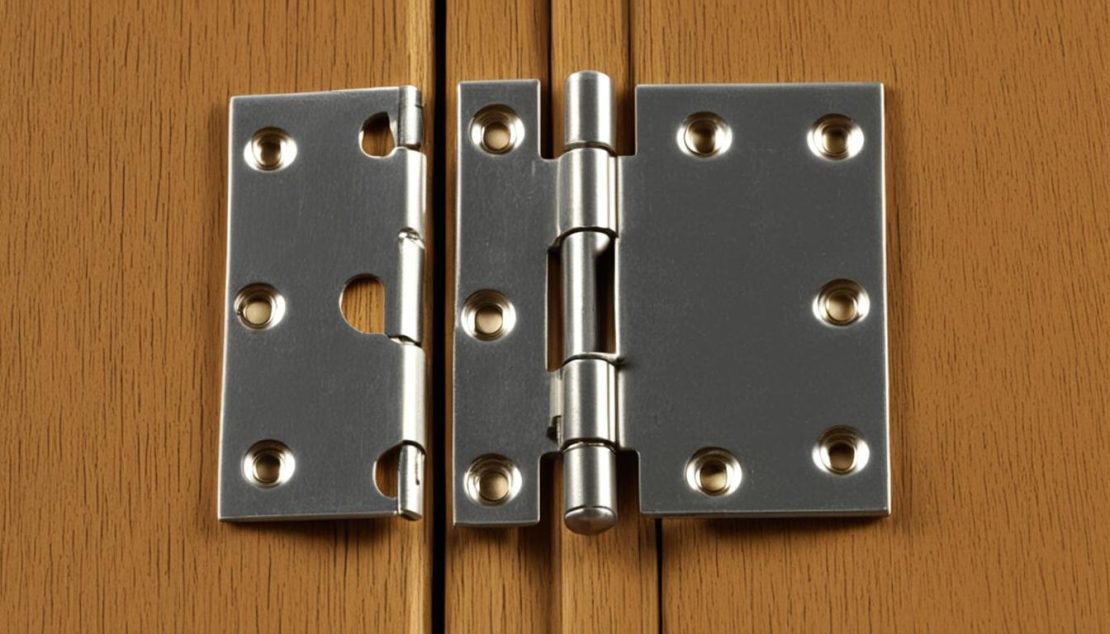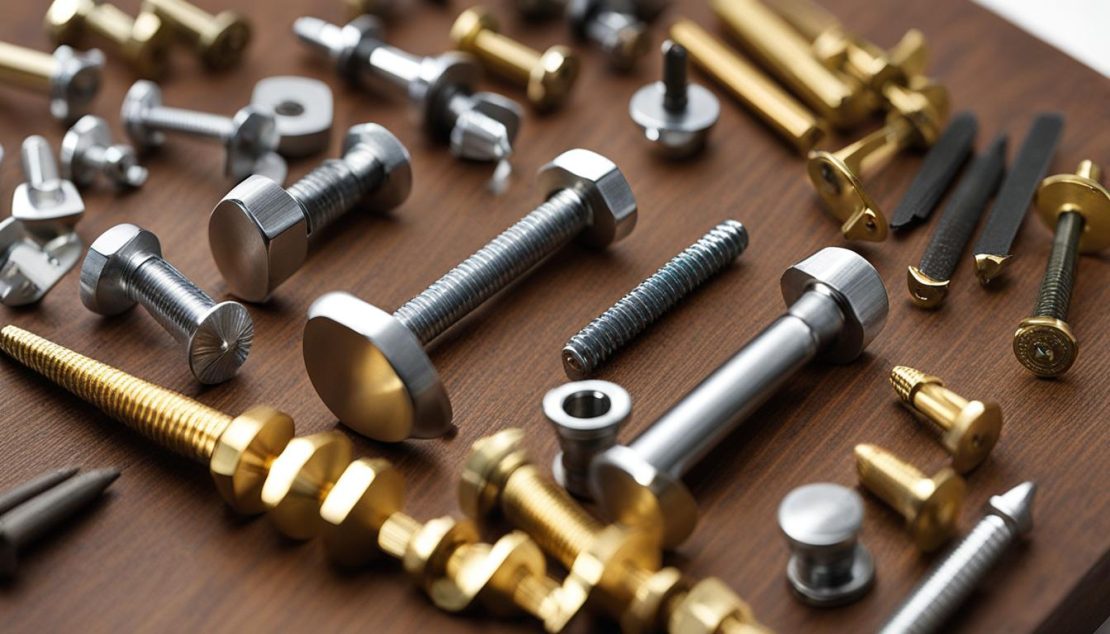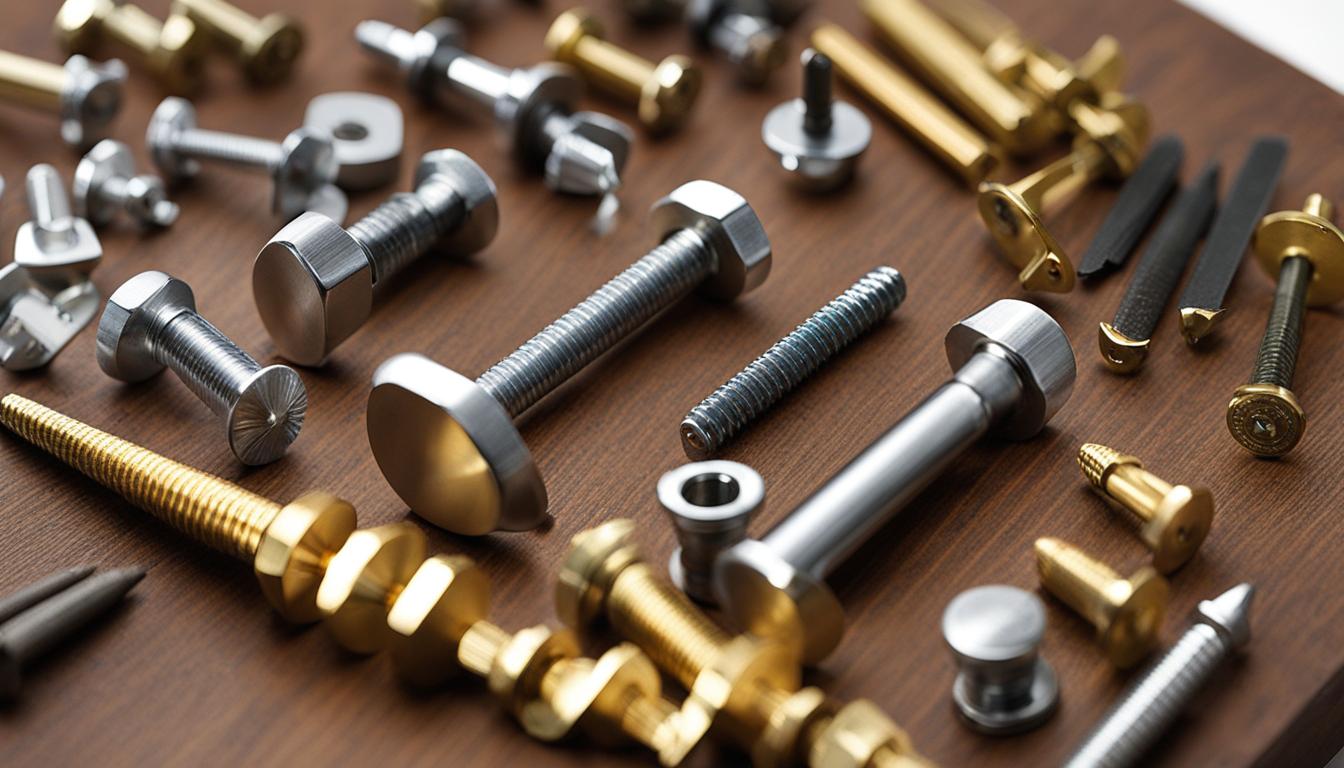If you’ve ever installed interior door hinges, you know how crucial it is to choose the right screw size. From the different types of interior door hinges available to the best ones for your needs, this section will help you choose the perfect hinge for your interior doors. Our informative guide will provide you with tips and insights on how to make the best selections for your next project.

Create an image of a close-up view of two interior door hinges, with one hinge partially attached to the door frame and the other hinge lying flat on a wooden surface. The screws used for the hinges are visibly different sizes, with one screw appearing longer and thicker than the others. Show the details of the screws and their relationship to the hinges and their respective surfaces. The overall mood should be neutral and informative, with a focus on accurate representation of the hardware.
When it comes to hinges for interior doors, there are a plethora of options to choose from. Whether you need to install new hinges or replace old ones, we’ve got you covered. We will discuss the various types of interior door hinges and their accompanying screw sizes, including the best interior door hinges for ease of installation and performance. Read on to learn more about how you can make the most out of your interior door hinges.
Types of Interior Door Hinges and Their Screw Sizes
Choosing the right interior door hinge is crucial to ensure smooth door operation and security. Here are the most common types of interior door hinges along with their recommended screw sizes:
| Type of Hinge | Features | Recommended Screw Size |
|---|---|---|
| Butt Hinge | Easy to install and available in different finishes. Compatible with different doors. | #9 x 2 1/2″ |
| Pivot Hinge | Allows the door to swing in both directions. Good for heavy doors or doors with unusual shapes. | #12 x 3″ |
| Continuous Hinge | Also known as a piano hinge, it runs the length of the door. Adds durability and extra security. | #10 x 1 1/2″ |
It’s essential to note that some manufacturers may recommend different screw sizes depending on the hinge and door type. Always refer to the manufacturer’s guidelines for the best results.
When installing interior door hinges, ensure they are level, properly aligned, and firmly attached to both the door and frame. A secure installation will reduce the risk of sagging or wobbling doors.

Create an image of a set of interior door hinge screws arranged neatly next to different types of interior door hinges in various finishes and sizes. Show a drill and screwdriver nearby, along with a ruler for measurement. The image should convey a sense of organization and efficiency, with all the necessary tools and materials at hand for a successful hinge installation.
Maintenance Tips for Interior Door Hinges
Proper maintenance is vital to ensure your interior door hinges function optimally for years to come. Here are some useful tips to keep your hinges in top-notch condition:
1. Cleaning – Regularly wipe down your hinges with a dry cloth to remove any dust or debris buildup. You can also use a mild cleaning solution to get rid of stubborn stains.
2. Lubrication – Apply a few drops of lubricant to the pin of your hinges to prevent them from squeaking or sticking. Be sure to use a lubricant that is specifically designed for interior door hinges.
3. Tightening Screws – Over time, screws may become loose, which can cause your door to sag or become misaligned. Check the screws on your hinges periodically and tighten them if necessary.
4. Avoid Slamming – Avoid slamming your interior doors, as this can cause damage to your hinges and door frame. Close your doors gently to prevent unnecessary wear and tear.
By following these simple maintenance tips, you can prolong the lifespan of your interior door hinges and ensure they continue to function smoothly.




